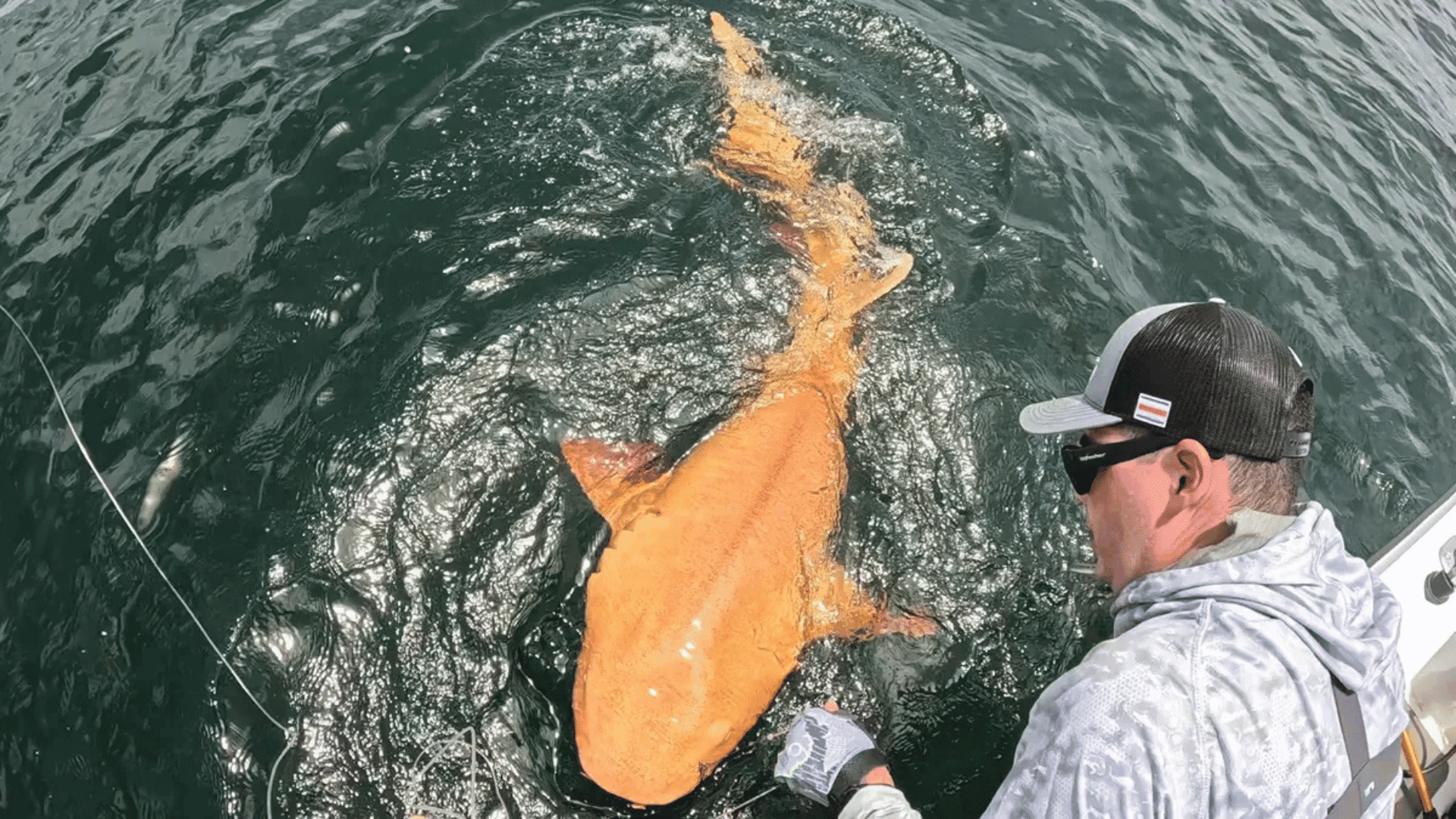A new study reveals that fishermen caught and released a first-of-its-kind bright orange shark. The nurse shark had albinism and a condition called xanthism, or xanthochroism, which increases yellow pigmentation in the skin.
First-Ever Bright Orange Shark

Though researchers have previously recorded xanthism in several animals, this is the first definitive case of a nurse shark with the trait. Sports fishers discovered the 6.6-foot (2-meter) shark off the east coast of Costa Rica, swimming 120 feet (37 meters) below the surface.
“We could not believe what we had in front of our eyes,” Garvin Watson, owner of the Parismina Domus Dei hotel in the village of Parismina, told Live Science in an email.
“That orange shark shining with the sunlight was something out of the ordinary,” he said. “We did not know that it was going to be a discovery worldwide, recognized by all the biologists of the world.”
After photographing the shark, the fishers removed the hook and released it back into the Caribbean Sea.
Xanthism has previously been documented in birds, frogs, and fish. Some animals are normally orange and yellow, but those colors are more dominant in xanthic animals.
Though there are occasional reports of unusual coloring among the typically yellow to gray-brown nurse sharks, this is the first scientifically documented case of a xanthic nurse shark, according to the study.
“We were very surprised and excited when we saw the [xanthism] in the photos,” study lead author Marioxis Macías-Cuyare, a doctoral candidate in biological oceanography at the Federal University of Rio Grande in Brazil, told Live Science in an email.
After noting the lack of black irises from the photos, researchers also concluded that the shark was albino. This rare combined condition, also known as albino-xanthochromism, was previously documented in a 2018 study of a ray species in the Irish Sea.
Through further study, the researchers hope to uncover more about how these conditions develop in sharks. They hope to discern whether certain factors, such as temperature, hormonal imbalances, environmental stress, genetics, or survival instincts, contribute to the change in color.







